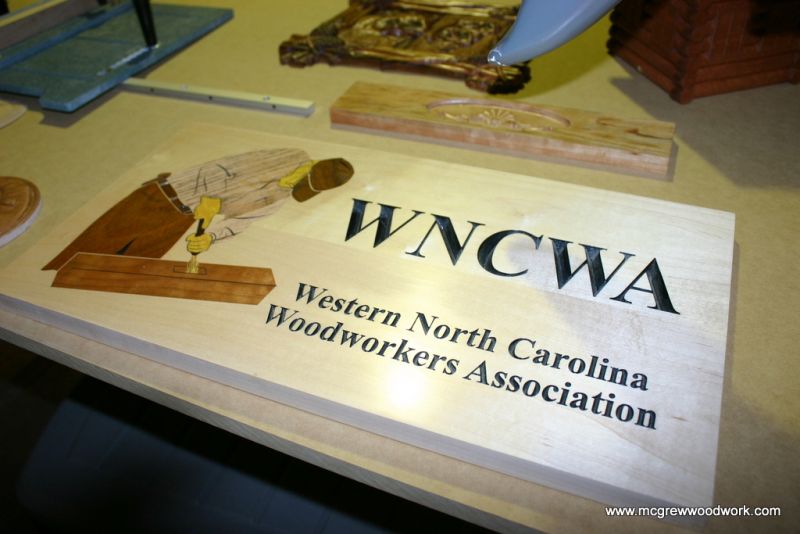Question
What exactly are the steps needed to take a drawing from AutoCAD or AshlerVellum's Cobalt to a CNC machine? I have a music stand that I'm designing, and I'm curious about cutting some of the parts, or at least some accurate templates for the parts, on a Thermwood CNC in a nearby shop. The only software that I have access to is Cobalt or AutoCAD. What steps do I need to take to break that drawing down into parts that the Thermwood will understand? What CAM software must they have for me to do this? With smaller parts or curved parts like legs, would I simply glue up a thick enough blank and then the Thermwood operator would know where to place it on the machine's bed?
Forum Responses
(CNC Forum)
From contributor J:
AutoCAD and others like it are CAD programs that design and produce files such as .dxf or .dwg. They produce vectors that can be read by a CAM (computer aided machining) program of several types. Mastercam, Aspire, Enroute - most of these are CAD/CAM programs but will also import data from a CAD only program.
Tool paths are produced in the CAM process and converted to machine code. For most of the world this is "g code." Some machines have a proprietary code, such as Thermwood, and this will be produced by your Thermwood operator, but I believe Thermwood will read gcode as well. Gcode or machine code is then read by the machine (in your case Thermwood) controller and translated into actual movement of the machine axis to produce parts desired.
You may want to collaborate with a machine operator while learning to prepare CAD drawings for machining, as tool pathing strategies can be a bit tricky.
Alternately, you could obtain eCabinet Systems software and design your projects with it. That way you can simply send the entire job file to a shop with a Thermwood router. With this method there is a lot less fussing around. No need to worry about layers and whatnot, as you do with DXF. What you see is what you get (from the machine).
First you will need to make a CAD (Computer Aided Design) drawing. AutoCAD is a good choice, as ACAD is the "800 lb gorilla." They have more copies of CAD sold than anyone else. And for every sold copy there are no doubt a number of bootleg copies. Nearly every CAM software is compatible with ACAD (but there are some issues with some of the higher end versions using solid models like Inventor for some CAM software). There are also a number of other CAD software, each with their strengths and weaknesses. When you are deciding on a piece of software, it's important to see if the logic behind it fits your way of thinking. If it doesn't match, you will find the software frustrating to use. Every software developer has a flow of commands. If the flow is very different to the way your thinking flows, bad fit. That's why there are so many different programs. When you see any software demonstrated, there is usually a guy that could run the demo with his eyes closed. Fine, watch that and see if it makes sense. But it's important to have your last project run through the process. Real world is how you see if the software really works for you. Honorable mention in CAD also goes to Rhino (my latest favorite). Rhino is very good with 3D shapes and digitized data.
Next is CAM (Computer Aided Manufacturing). This is the step where you decide things like what kind of tool to use, at what RPM, cutting direction (important to prevent tearout), the order of machining, and things like depth of cut (d.o.c.) and width of cut (w.o.c.). There are other things to consider... Do you need to tab the part to hold it down using vacuum? I know it sounds like a lot, but rest assured that a fair bit of this is set up once and recorded with the tool information. Today the CAM step is, in many cases, a gimme.
But just how does CAM software know what to do with CAD data? It depends on the software but generally it works this way. To make the CAM process easier, most programs expect certain information to be in certain places in certain ways. For example, the software expects the drawing scale to be 1:1. It can be changed if need be, but it's an extra step. Another way to associate specific information from CAD to CAM is by layer names. If, for example, when you were drawing, you made a layer in the drawing, and called it 5mm drill, and on this layer were all the 5mm drilled holes, then in CAM you map that layer to a tool called 5mm brad point drill. The software will know to use that tool to do that machining.
If you did not draw with layers, then the programmer at the machine will have to do it manually by selecting all the like machining details and grouping them together. Then he (or she) will assign a machining process to them. There is software that will do this process almost completely automatically too. But that's the essence of how it works.
Lastly, a word is in order about file types. Many if not all CAM programs can accept more than one kind of file. The most universal is .dxf (drawing exchange format). But the simplest way to find out compatibility is to use the "file, open" or "file, import" command in your CAM Package. Usually some combination of "save as" out of CAD and open or import into CAM will do the trick. That said, the less you have to convert drawing types, the better the likelihood that 100% of your design intent will be intact.
